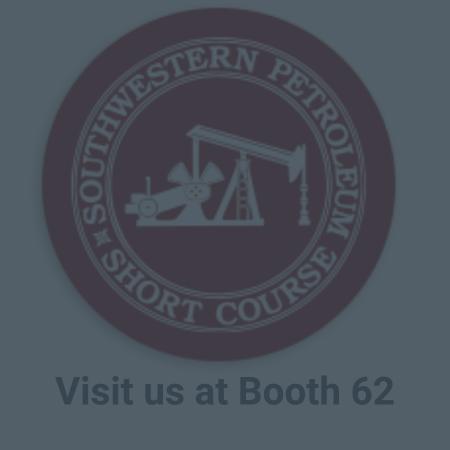Top 5 Plunger Lift Optimization Misses
Operators are always looking to get the most out of their plunger lift wells—maximizing production, reducing downtime, and extending equipment life. Achieving that consistently means knowing what to adjust, when to adjust it, and how to account for changing conditions in the field.
In the push for more efficient and reliable optimization, a few recurring challenges tend to surface. These issues, while common, can limit performance if left unaddressed. Here are the Top 5 Plunger Lift Optimization Misses that every team should be watching for—and how to stay ahead of them.
1. Ignoring Well Specific Characteristics
One of the most common pitfalls in plunger lift optimization is applying blanket rules and settings across a field without accounting for the unique characteristics of each well. Variables like depth, reservoir and pressure characteristics, plunger type, and pressure characteristics all influence how a well should be cycled. Ignoring these well-specific traits can lead to non-optimized cycles, inefficient liquid evacuation, shortened equipment life, lost or deferred production, or, in extreme cases, well intervention.
The solution - Ambyint’s InfinityPL system can ingest a wide range of well-specific historical and real-time data to tailor control logic for each asset. InfinityPL learns how each well responds to changes over time and can adapt operating parameters dynamically, eliminating the "one-size-fits-all" approach. As a result, wells are optimized individually and automatically, freeing up valuable time for engineers, well operators, and technicians, while maximizing production and minimizing wear and inefficiencies.
2. Over Reliance on Manual Manipulation of Setpoints
Operators often resort to manually adjusting open/close triggers when trying to optimize plunger lift wells. While field knowledge is invaluable, frequent manual tuning can introduce inconsistencies, drive suboptimal cycles, and create a time consuming and ineffective cycle of reactive troubleshooting rather than proactive optimization.
The solution - Ambyint’s InfinityPL platform relieves operators from routine tuning by learning optimal setpoints based on historical patterns, current well conditions, and system behaviour with our Autonomous setpoint management (ASPM). While InfinityPL optimizes each plunger well, operators can focus on exception-based management utilizing our advanced surveillance and analytics dashboards, rather than continuously tweaking each well.
3. Poor Arrival Sensor Management
Plunger arrivals are the heartbeat of the lift cycle, and unreliable or improperly configured arrival sensors can wreak havoc on optimization. False arrivals and false non-arrivals can lead to premature shut-ins, extended downtime, and unnecessary well/site visits - all of which reduce efficiency and could lead to a potential safety incident.
The solution - Ambyint’s InfinityPL anomaly detection can validate sensor health and flag anomalous behaviour by comparing arrival data to expected trends in rate and pressure. Early intervention from this and other anomalies keep your plunger lift system running efficiently, and can also help pinpoint when and where plunger maintenance is most critical.
4. Not Accounting for System Changes
Upstream systems are dynamic and line pressures fluctuate for a number of reasons - compressor downtime, weather events, new TIL’s, etc. Static setpoints or logic that doesn’t adapt to these system level events can quickly become stale, not giving your plunger system the desired outcome.
The solution - InfinityPL’s closed-loop automation continuously monitors line pressure (LP) and can adapt to these changes real-time. By recognizing and adjusting for these evolving conditions, Ambyint's platform ensures the plunger performance remains aligned with the current operating environment.
5. Not Embracing AI and ML Tools
Some operations still hesitate to adopt AI or ML tools, relying instead on traditional rule-based logic or manual expertise. This hesitation can stall progress, particularly in fields with hundreds or thousands of wells where human bandwidth is stretched thin. Without advanced tools, opportunities to focus on higher value tasks, production gains, cost savings, and improved well health are often left on the table.
The solution - Ambyint’s goal is not to replace field knowledge, but to amplify it. When onboarding InfinityPL to your plunger assets, it’s critical to build trust with your engineers, technicians, and field staff. To support this, the platform offers a recommendation mode prior to activating full ASPM. In this phase, InfinityPL suggests setpoint changes that require user approval before being applied. This collaborative approach gives your team visibility into the system’s methods and builds confidence in how and why optimization decisions are made, laying a strong foundation for successful implementation.
Plunger lift optimization doesn’t have to be a constant cycle of manual tweaks and reactive troubleshooting. By identifying and addressing these common misses, operators can unlock meaningful improvements in performance, efficiency, and well health.
With tools like Ambyint’s InfinityPL, optimization becomes proactive, scalable, and tailored to the unique dynamics of every well. The result? Less time chasing issues, more time capturing value.
Ready to make every cycle count? Let’s talk - get in touch with us today for more information.




